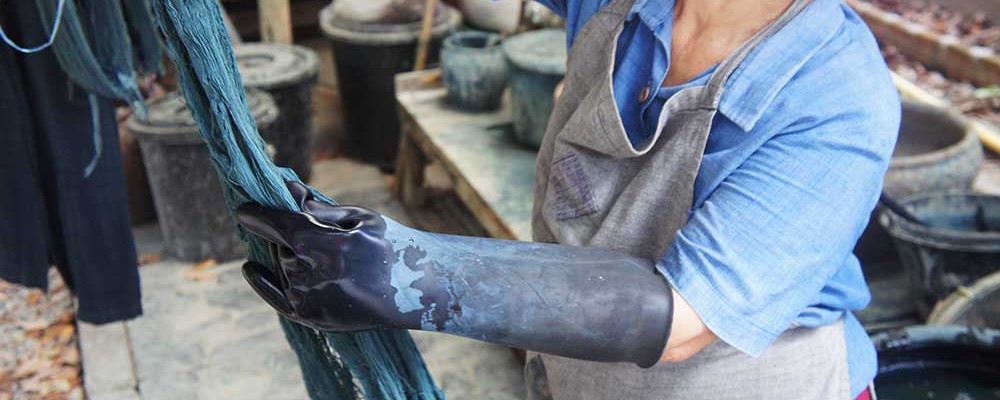
Behind the Scenes: What Is The Indigo Dyeing Process?
We are all familiar with the distinct blue colour of jeans. This unique shade of blue is called indigo, and it comes from an organic dye derived from Indigofera plants. Considered the king of blues, indigo is extensively used in fabric dyeing for its rich and intense colour. Indigo-dyeing has a long history, and the method is still as popular as it was centuries ago. What's most interesting, is that the process followed today is pretty much the same as was used in 2000 B.C.
In this post, I'll explore indigo-dyeing in detail and give you a sneak peek behind the scenes of the incredible indigo dyeing of our stunning Offset Warehouse textiles. But before that, let's have a quick look at its history.
Behind the Scenes: What Is The #Indigo Dyeing Process? #ecofabrics #ecodyeing

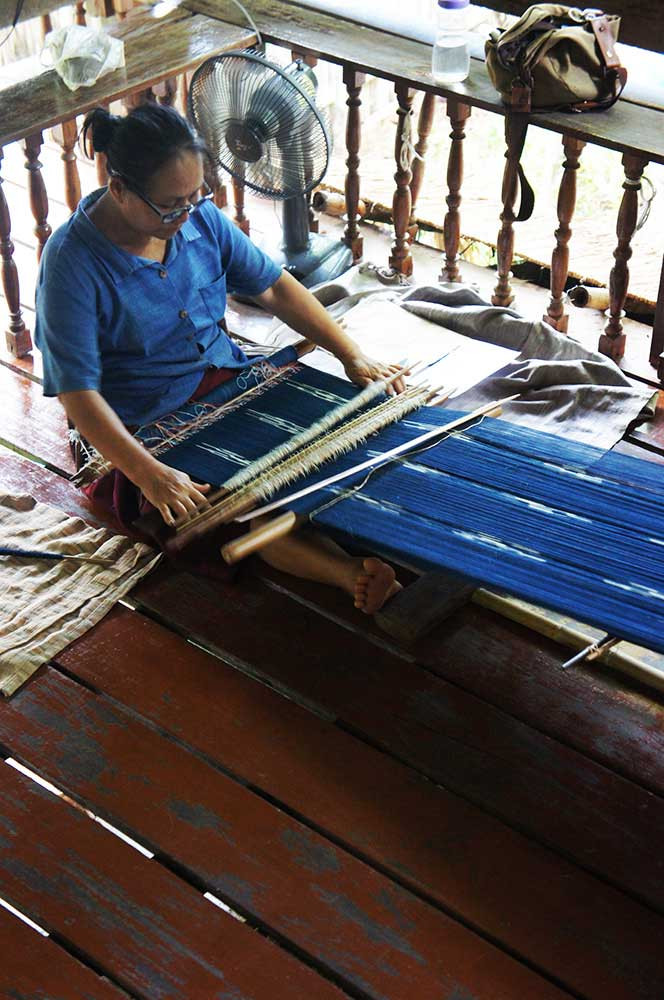
Indigo was equally popular in West Africa and North America. Some African tribes, like the Hausa of Kano, continue to work at communal indigo dye pits even today. The Japanese continue to use this dye to colour their traditional Kimono Yukata for summer. History also tells us that this dye was a valuable trading commodity in the old world, often referred to as “blue-gold”. If you are interested in learning more about the origins of indigo and its journey across the world, I suggest you take a look at this article.
How Is Indigo Prepared?
Most of the indigo used commercially comes from the plant species Indigofera tinctora, that thrives in tropical climates. The leaves of this plant are harvested and processed to yield the dye. One unusual fact that distinguishes indigo from other dyes, is that the dye is not present in true form in the plant. Instead, it has to be extracted from the leaves through a detailed process.
This manufacturing process involves the following steps:
- The freshly harvested leaves are placed into a fermentation tank, and an enzyme called indimuslin is added to it.
- The enzyme hydrolyses indican in the plant leaves and releases a chemical called indoxyl into the surrounding liquid. It is left to sit for several hours for the process to complete.
- The resulting liquid is then mixed with air using paddles, and the air oxidises it into the pigment.
- The upper layer of the liquid is then removed, and the pigment can be seen as a blue sludge at the bottom of the vessel.
- This sludge is quickly heated to stop further fermentation. It is then dried to form a thick paste or powder. This is the dye that we use to colour cloth.
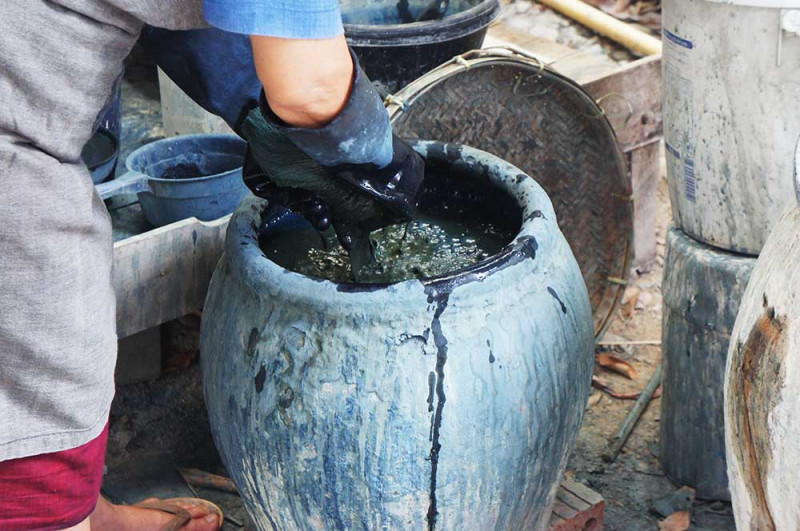
A more elaborate account of the manufacturing process is available here on Wild Colours, if you want to know more!
So that's how the indigo pigment is extracted, But how do you dye fabric with it?
Indigo dyeing — The Process
Indigo is a dye that doesn't need a mordant to adhere to cloth, and it works best on natural fibres like cotton, silk and wool. There are plenty of recipes and ingredients to use for the process, if you want to attempt it. Although time-consuming, it is relatively straightforward and easy.
The materials you need for indigo dyeing are indigo powder, water, a big stainless steel pot, soda ash to create the desired pH and wooden and plastic tools. The traditional method uses a natural fermentation vat (like the one above) - this is how all of our fabrics are dyed.
How to make a fermentation indigo vat
- Pour two and a half litres of boiling water into a stainless steel saucepan or stock pot.
- Add soda ash to the water - about a third of a teaspoon.
- Careful not to overfill it (you need room to dye your raw material!), slowly add cold water - one to two litres - to bring the temperature down to 45°C.
- Add the indigo paste or powder solution into the water. It's really important that this is slowly and carefully added, with virtually no movement - do not drop from a height. A good trick is to almost submerge the jug into the saucepan and slowly tilt it, to gently flow the contents into the water.
- Measure the pH in the saucepan - you need it to be at least nine but no higher than 10. Check this at the end as well. If the pH is lower than that then dissolve a bit more soda ash into the vat.
- Weigh the spectralite or dithionite and sprinkle it onto the surface of the indigo vat.
- Put the lid on the pot to keep it warm.
- The temperature must be kept at a constant 45°C temperature for 30 minutes. You can put it by a radiator or wrap it in blankets - whatever it takes.
- After 30 minutes, stir the vat ULTRA slowly. Be careful not to let the condensed steam drip on the lid drip back into the pot. Also be careful not to let any air get into the vat.
- Make sure your pot is still at 45°C and repeat number nine in another half an hour.
- The end colour should be a very yellow green colour, and there will be brown bubbles on top. Sometimes it will take an hour to get to this point, sometimes nearly two hours.
- Important: You must use the indigo vat as soon as it's ready!
Once you've got your indigo dye, you need to dye your yarn! The following are the steps in the indigo dyeing process:
- The first step is preparing the fibre. After washing the fibre well, you should soak it for few hours to improve dye penetration.
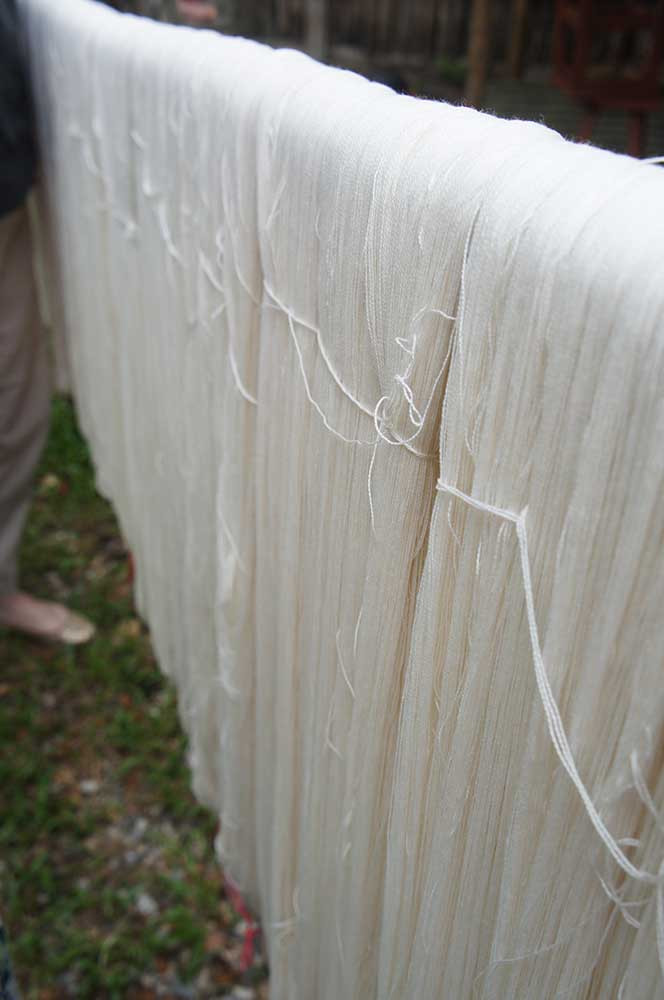
- Next, prepare the indigo stock solution. A solution of soda ash and water provides the desired pH for the dye to work. Then dissolve the indigo into this solution and mix it in thoroughly. At the right pH, the colour of the liquid in the vat will be green.
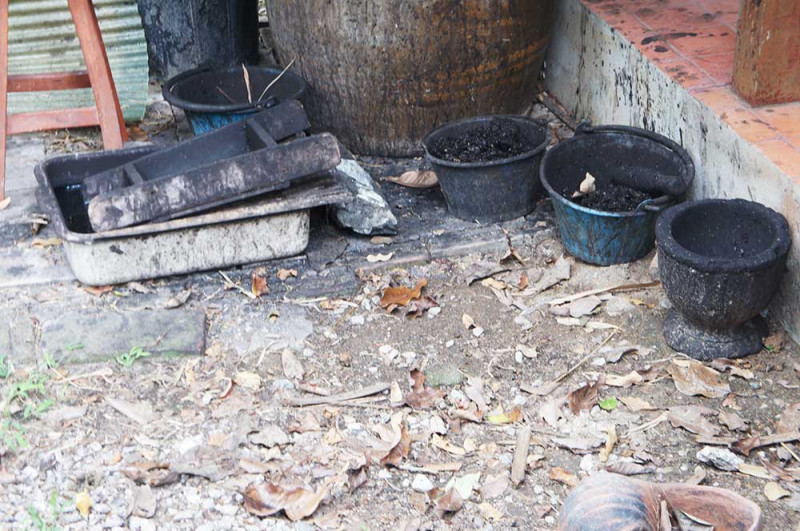
- Now, the cloth can be dipped into the fabric. Since indigo works by oxidation, the colour you will see when you take the fabric out will be different from the final result. Once you hang the fabric up to dry, you will see the blue colour intensifying over time. You can literally see the colour darkening in front of your eyes - it's magical!
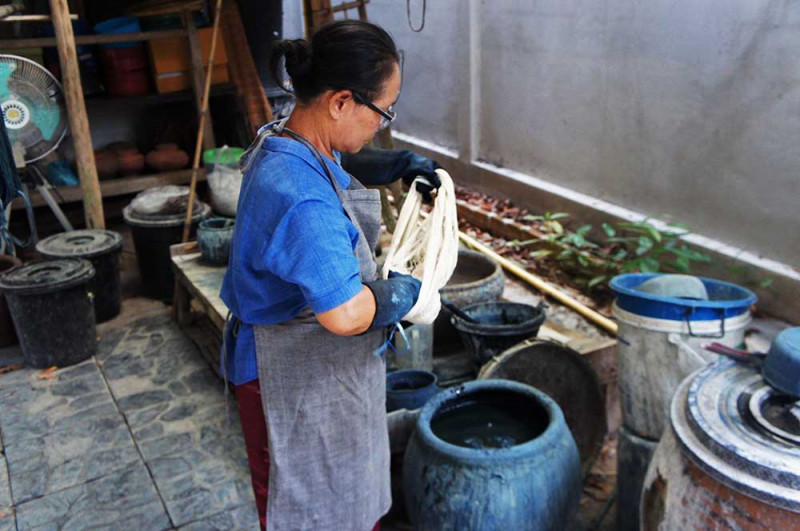
- The entire process of dipping the cloth has to be performed several times (at least 5 times or more), with drying times in-between, to yield a lasting colour. I found this article on Root Simple very informative, and the illustrations provide a good idea of how the dyeing works.
Real Vs Synthetic Indigo
While natural indigo is derived from plants, the synthetic variety is chemically created. The main difference between the two is that the natural dye is sustainable, whereas synthetic indigo is derived from petrochemicals, and the manufacturing process yields toxic waste products. The by-products of natural indigo are bio-degradable and non-toxic. The natural process by which you obtain real indigo leaves impurities in it, called indirubins. These are responsible for the interesting colour variations that you get when you use them. Synthetic indigo, on the other hand, yields a uniform blue colour throughout.
Who Uses Indigo
Our wardrobe staple, the dark denim jeans, are dyed with indigo. The dye is used in different concentrations and methods to create different varieties of denim designs and colours. The dyeing characteristics of indigo make it a great choice for Shibori and Batik techniques. Shibori is a traditional Japanese tie-dye technique where we bind, fold or stitch cloth before dyeing. This yields amazingly intricate and unique patterns after the dyeing process. Batik is an Indonesian technique of wax-resist dyeing, where wax is applied in specific patterns, and the cloth is dyed. The areas with wax resist the dye, while the rest of the cloth turns blue.
Here are photos of our indigo dyed fabric being woven using a back-strap loom. You can see that the textile is worked on from the back-side, and when it is flipped over, the beautiful, diamond weave is revealed (although I love the "wrong" side of the fabric too).
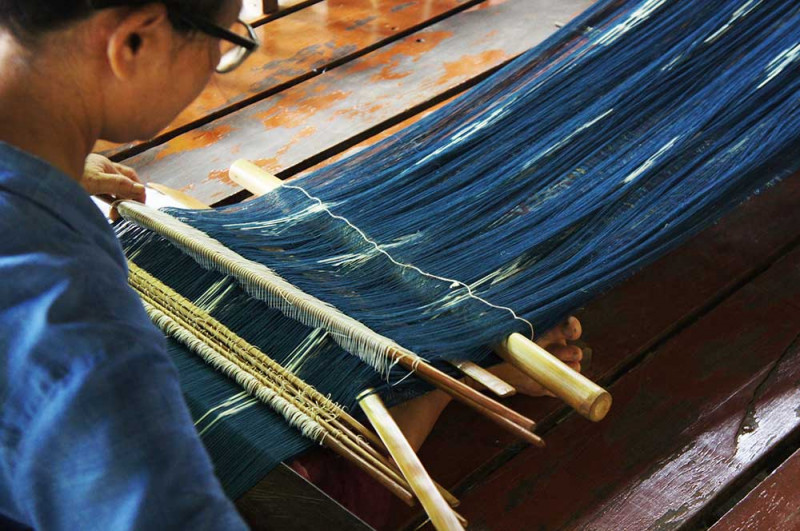
If you enjoyed this find out about our some of our other fabrics hand woven in a Thai garden here! Make sure you sign up for our newsletters for even more updates! Please share the article by using the tweet links below...
The dye has to be #extracted from the leaves through a detailed process. #Indigodyeing

#indigodye doesn't need a #mordant & it works best on #naturalfibres like #cotton, #silk and #wool.

The #indigodying process is same as it was in 2000 B.C! #ecodyes

